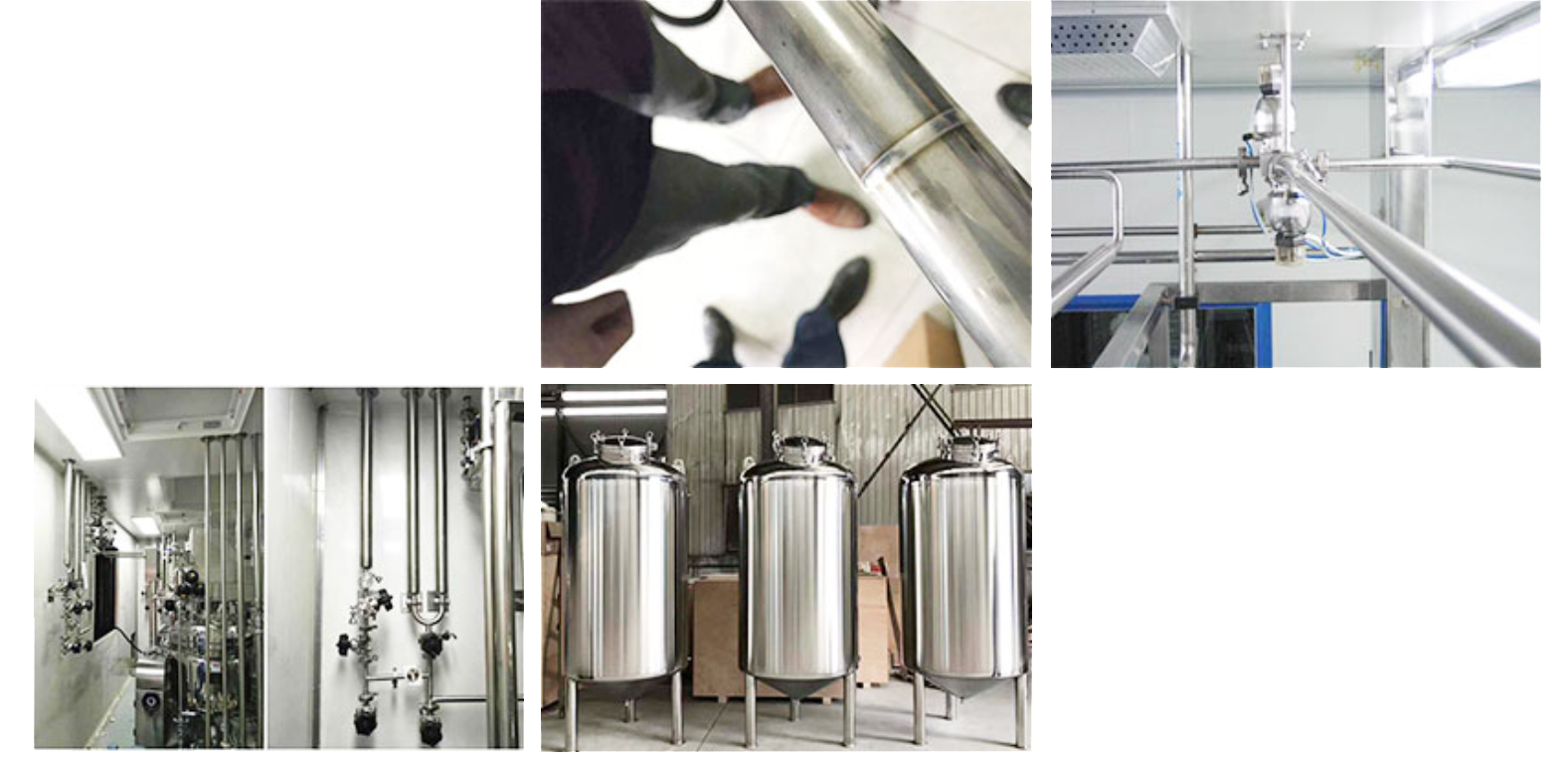Clean Pipe Installation
Introduction to Clean Pipeline Installation: Generally, BA or EP polished pipes are used for pipeline installation. The pipes are heated with argon gas and processed, while EP pipes are processed by electrolytic grinding. Its inner and outer surfaces are extremely shiny. In addition to meeting the requirements of conventional industrial pipelines for welding seams, the welding of clean pipelines also requires that the inner and outer surfaces of the pipe be free from contamination during welding, and that the inner and outer surfaces of the weld seam be basically the same as the brightness of the base material.
Installation of clean pipelines for pure water equipment
There are numerous processes in the pharmaceutical industry that involve distribution systems. For example, the distribution system for purified water, the distribution system for injection water, and the transfer and distribution of medication between preparation containers.
Understand the common practices and special requirements of these systems to provide customers with process container design, manufacturing, installation, testing, and validation support services.
According to the special requirements of bioengineering equipment, clean pipeline engineering should have a good structure that meets the requirements of pharmaceuticals and hygiene. A good pipeline system should fully consider the following aspects:
Chemical stability of materials - no leaching. Made of non-toxic and non shedding materials. Commonly used are 304 and 316L stainless steel.
Surface treatment - The surface in contact with the medium usually requires mechanical or electrochemical polishing treatment.
Connection method - mainly using hydrogen protection automatic trajectory welding, and adopting sanitary quick open connections in places with convenient disassembly requirements.
Reasonable pipe diameter - The selection of pipe diameter is essentially about choosing an appropriate flow rate to prevent microorganisms from staying, adhering, and breeding on the pipe wall.
Tilt angle - it is conducive to emptying the solution so that it can be drained completely by its own gravity, while avoiding multiple low points.
Limit the length to diameter ratio at the attachments and valves to prevent the occurrence of long blind pipe ends that hinder microbial growth.
Temperature - It can effectively prevent microbial growth within certain temperature ranges. For example, the internationally recognized method is to keep the injection water at a temperature above 800C or circulate it at a temperature above 650C for insulation.
Sampling points and detection points - Reasonable setting of online detection points and sampling points can meet the needs of maintenance and verification after the system is put into operation.
Thermal insulation - prevents burns, frostbite, condensation and saves energy. The insulation of pipelines passing through rooms with different hygiene levels also needs to consider sealing to prevent air circulation between rooms with different hygiene levels.
